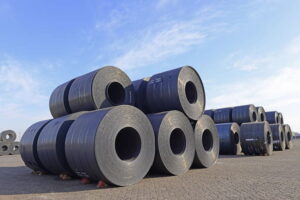
The low water on the Rhine that impaired iron ore and scrap transport in 2018 and temporarily caused force majeure at some Duisburg mills has pushed authorities to take remedial measures.
The Directorate General for Waterways and Shipping (WSV) has announced that it will spend a sum of €260 million ($293m) to widen and deepen the waterbed between Mainz and the Loreley Rock. It will do similarly in the northern section past Cologne and Düsseldorf, leading up to the Ruhr. In the latter section, most important for transport to and from the Dutch/Belgian sea ports, the ground is to be lowered by 20 to 30 centimetres to a depth of 2.80 metres up to 2037.
Last year, the low water period persisted from the end of June until early December and saw some of the lowest water levels in the 150-year history of depth monitoring, Kallanish learns from WSV. The Rhine is Germany’s most important waterway for freight transport. Industrial hubs along the river handle their imports and exports predominantly through the ports of Amsterdam, Rotterdam and Antwerp (ARA). Roughly one third of all freight landing at the ARA ports are forwarded into Germany via the Rhine – some 150 million tonnes/year.
The plans will face objections from those interested in the protection of nature and cultural heritage, especially in the Rhine Valley near the Loreley. WSV argues however that a big vessel of 110m length and a capacity of 3,000 tonnes replaces some 150 road trucks. Following the waterbed expansion, vessels could load up to 250t more, the equivalent of about 10 road trucks, WSV says




